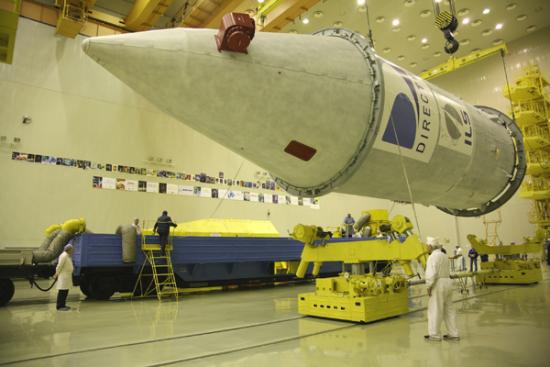Building a booster in the garage
Now I will present you a project of a launch vehicle capable of outputting up to 300 kg of payload to a low orbit.

')
All 3 stages of the launch vehicle are made according to the pressure scheme i. the engine does not have a turbopump assembly. This makes the rocket easier and easier to manufacture, and also reduces its cost. Kerosene / oxygen fuel vapor. This scheme has one minus: the specific impulse is less than that of engines with TNA.
Some rocket drawings:
1 step :

2 step :

3 step :

Some characteristics of the rocket :
Length: 24.3 meters.
Width: 1.6 meters (4.175 with stabilizers).
Weight: 25950 kg.
Low orbit payload: 300 kg.
Kerosene weight: 6771 kg.
Mass of liquid oxygen: 16929 kg.
More detailed specifications on the drawings.
The cost of 1 launch: 6771 kg of kerosene x32 rub / kg + 16929 kg of liquid oxygen x 6 rub / kg = 318246 rubles for fuel.
The cost of building the rocket itself is about 150000 rubles.
The total cost of the launch will be no more than 470,000 rubles. In terms of 1 kg of payload, 1566 rubles / kg or about $ 20 / kg.
Design features:
The tilt is controlled by aerodynamic control surfaces.
Above 20-25 km, when the rocket takes off from the atmosphere, control is performed using the DCS (reactive control system). It consists of 6 compressed gas cylinders. with the help of 4, a roll control takes place, and with the help of 2 control of rotation. The specific impulse of the CSF is about 50 seconds, but this is sufficient.
A special feature of the CSF is that when 4 engines are activated, the rocket simultaneously starts to accelerate forward, and when activated individually, roll control occurs. This trick is used for the departure of the 2nd and 3rd stages of the rocket from the spent 1st and for the departure of the 2nd stage about the 3rd.
I would also like to suggest testing the creation of a similar light rocket for the Green Cat and his team .
They want to send 100 kg to the moon. This is like 300 kg on DOE. The cost of 1 kg in orbit is now around $ 3,000 or 230,000 rubles. 300 kg will cost 69 million rubles.
Their team was able to collect 1.5 million rubles. to develop a satellite. They will probably run it with the help of a trampoline.
The collected money would be enough for bench tests + 2 launches + license for space activities. After that, they would not have an outflow from microsatellites. And then you could start developing a satellite. The same rocket can send it to the moon.

')
All 3 stages of the launch vehicle are made according to the pressure scheme i. the engine does not have a turbopump assembly. This makes the rocket easier and easier to manufacture, and also reduces its cost. Kerosene / oxygen fuel vapor. This scheme has one minus: the specific impulse is less than that of engines with TNA.
Some rocket drawings:
1 step :

2 step :

3 step :

Some characteristics of the rocket :
Length: 24.3 meters.
Width: 1.6 meters (4.175 with stabilizers).
Weight: 25950 kg.
Low orbit payload: 300 kg.
Kerosene weight: 6771 kg.
Mass of liquid oxygen: 16929 kg.
More detailed specifications on the drawings.
The cost of 1 launch: 6771 kg of kerosene x32 rub / kg + 16929 kg of liquid oxygen x 6 rub / kg = 318246 rubles for fuel.
The cost of building the rocket itself is about 150000 rubles.
The total cost of the launch will be no more than 470,000 rubles. In terms of 1 kg of payload, 1566 rubles / kg or about $ 20 / kg.
Design features:
The tilt is controlled by aerodynamic control surfaces.
Above 20-25 km, when the rocket takes off from the atmosphere, control is performed using the DCS (reactive control system). It consists of 6 compressed gas cylinders. with the help of 4, a roll control takes place, and with the help of 2 control of rotation. The specific impulse of the CSF is about 50 seconds, but this is sufficient.
A special feature of the CSF is that when 4 engines are activated, the rocket simultaneously starts to accelerate forward, and when activated individually, roll control occurs. This trick is used for the departure of the 2nd and 3rd stages of the rocket from the spent 1st and for the departure of the 2nd stage about the 3rd.
I would also like to suggest testing the creation of a similar light rocket for the Green Cat and his team .
They want to send 100 kg to the moon. This is like 300 kg on DOE. The cost of 1 kg in orbit is now around $ 3,000 or 230,000 rubles. 300 kg will cost 69 million rubles.
Their team was able to collect 1.5 million rubles. to develop a satellite. They will probably run it with the help of a trampoline.
The collected money would be enough for bench tests + 2 launches + license for space activities. After that, they would not have an outflow from microsatellites. And then you could start developing a satellite. The same rocket can send it to the moon.
Source: https://habr.com/ru/post/389957/
All Articles